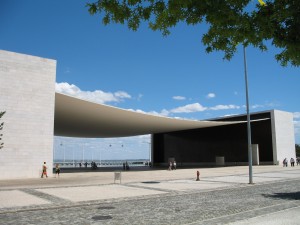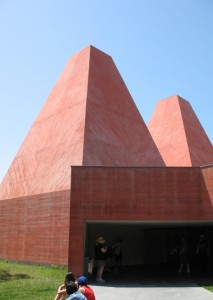
Recently, the widely read architectural website ArchDaily released its Buildings of the Year 2011 report and several winners from its categories are based in Iberia, including the MIMA House (MIMA Architects) in Viana do Castelo and Barcelona’s iGuzzini Illuminazione España H.Q. (MiAS Arquitectes). This, alongside Eduardo Souto de Moura’s 2011 Pritzker Prize win (architecture’s most prestigious award) raises the question: why is Portuguese and Spanish contemporary architecture garnering so much attention all of a sudden?
Perhaps the attention may not be so sudden after all.
By the time Portugal and Spain entered the EU in 1986, both countries had emerged from a period of architecture still clinging to tradition and history but moving increasingly towards modernism. EU membership brought an influx of money for large-scale public works projects, everything from pedestrian bridges to high schools and football stadiums. Private money also found its way to the region and so too the building of corporate offices, hotels and residential developments.
International designers found fertile grounds in Iberia, resulting in buildings as diverse as Frank Gehry’s Guggenheim Museum in Bilbao (1997); Rem Koolhaas’s Casa da Música in Porto (2005) and Jean Nouvel’s Silken Puerta America Hotel in Madrid (2005), a project that included a number of well-established architects and designers.
Not all major projects have been handed to foreign architects, however. Iberian architects have taken on a number of projects thereby increasing their profiles both here and abroad. The Planetarium at City of Arts and Sciences (1998) casts its eye over Santiago Calatrava’s native Valencia as an ode to the visual. The work of Rafael Moneo (the 1996 Pritzker laureate) on Madrid’s Museo del Prado addition (2007) redefined the space while remaining respectful of the venerable museum. This is something that is shared with his smaller projects, like the Fundació Pilar i Joan Miró (1992) in Mallorca, a response to an existing site that could no longer hold the large personal collection of a prolific artist nor hold back encroaching island development.
Architectural schools in both Spain and Portugal have had various graduates lead individual firms and become so influential that in the case of the University of Porto, they have in turn become part of a “Escola do Porto” (with two of its best known proponents becoming Pritzker Prize winners: Álvaro Siza Vieira in 1992, and Souto Moura in 2011).

The roles played by large-scale international events in bringing further attention cannot be understated. Since 1992, the peninsula has been host to a Summer Olympics, a European football championship and three world expositions — providing showcases for both regional and international architects and leaving several developments in their wake, such as Lisbon’s Expo 98 site-turned-multifaceted Parque das Nações and the sporting complexes at Montjuïc, Barcelona. By 2006, Spanish architecture had even caught the attention of the art world with a well-received exhibition at the Museum of Modern Art in New York.
With a number of established architects becoming household names, could younger firms compete for higher-profile projects? Recent instances demonstrate how younger architects may be stepping from the shadows and capturing attention. A project such as the award-winning Media-TIC Building (2009), awarded to the Enric Ruiz-Geli led Cloud 9, shows a current articulation of sustainable design for a technology hub in Barcelona’s 22@ district. Likewise, curatorial interest in the region has been highlighted with New York’s MoMA hiring of Portuguese architect and writer Pedro Gadanho as its contemporary architectural curator in late 2011. It would seem that Portuguese and Spanish architecture is poised to continue its popularity.
A looming question remains though: how will the region’s economies affect current and future projects, given the serious crises both Spain and Portugal are struggling to emerge from? The slowdown in projects is already palpable. The monumental scale of the new home for the nearly completed Museu Nacional dos Coches (designed by Paulo Mendes da Rocha) along Lisbon’s waterfront has been the target for criticism as a symbol of overly ambitious and spendthrift governments with little interest in community input. Criticism that was shared in certain regards to Peter Eisenman’s Santiago de Compostela cultural center (2011), a 12-year project that mimics rolling hills on Monte Gaiás.
A new Lisbon airport has been on the brink of construction for years, only to be delayed by various location-related and political woes. Projects such as a new city archive and library as well as other developments along the Tejo waterfront still remain on paper. It is unlikely at this point that any projects that haven’t been already earmarked will be constructed any time soon.
Time will determine whether this is only a misstep for a region that will continue to be a test bed for design or whether this is, in fact, the end of a chapter in contemporary architecture.
Wonderful article Cristina! I don’t know how this complex fits into the architectural history of Lisbon, but one of the most beautiful places I visited was The Gulbenkian (Museu Calouste Gulbenkian). The grounds were just beautiful.